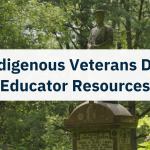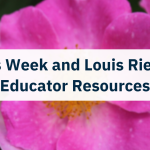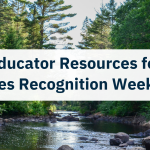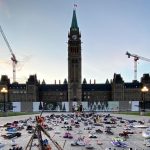Truth and Reconciliation Week: Learning Through Action
For some, truth and reconciliation means acknowledging and learning about the past. For others, the focus lies in honouring treaties. Reconciliation is complex, from letting go of stereotypes to reclaiming language and culture. It is a process. One that takes humility. One that requires action. Ultimately, reconciliation is the responsibility of all Canadians.
The Truth and Reconciliation Commission defines reconciliation as “establishing and maintaining a mutually respectful relationship between Aboriginal and non-Aboriginal peoples in this country. In order for that to happen, there has to be awareness of the past, an acknowledgement of the harm that has been inflicted, atonement for the causes, and action to change behaviour.”
Truth and Reconciliation Week
This year, the National Centre for Truth and Reconciliation is offering Truth and Reconciliation Week, a 5-day virtual program to engage participants in conversations about reconciliation, including treaties, land claims, and the residential school system. Between September 27 and October 1, educators and learners in grades 5–12 can join the conversation. Artistic and cultural performances by First Nations, Métis, and Inuit artists are available to learners. Additionally, discussions with Elders, Knowledge Keepers and residential school Survivors will guide the week.
Supporting Reconciliation through Education
Recent discoveries of unmarked mass graves bring truths about the Missing Children to light. Many parents, educators, and community leaders are asking the difficult, necessary questions:
What can we do to support our young people in their journey towards reconciliation?
How can we honour the Truth and Reconciliation Commission’s 94 Calls to Action in a meaningful way?
How can we educate ourselves to feel adequately prepared to engage young people in the process of reconciliation?
For many, this is a daunting task of self-reflection and personal education. It is important to remember, however, that reconciliation is not linear. “Somewhere between action and reaction there is an interaction, and that’s where all the magic […] lies.” Robin Wall Kimmerer, an Indigenous author and scientist, summarizes this interaction by stating, “Action on behalf of life transforms. Because the relationship between self and the world is reciprocal. It is not a question of first getting enlightened or saved and then acting. As we work to heal the earth, the earth heals us” (2015, p. 404).
Sharing the Wisdom of Elders and Knowledge Keepers
Here at Learning Bird, we have had the privilege of collaborating with over 55 schools in 52 communities across the area known as Canada. With the wisdom shared by Elders and Knowledge Keepers, these partnerships have created educational materials to inspire young people from coast to coast to coast. Below are a variety of resources to begin the journey to reconciliation and learning through action. You may wish to use these resources to support your own learning or teach in your classroom.
- Explore the history of residential schools and the TRC’s 94 Calls to Action.
- Listen to a Nigigoonsiminikaaning Elder speak about reconciliation and moving forward.
- Learn about Indigenous Rights.
- Read about Indigenous history and educational practices.
- Enjoy novels written by Indigenous authors.
- Practise writing and saying a land acknowledgement.
- Educate yourself about the importance of language revitalization to reconciliation.
- Hear why the land is sacred from a Naicatchewenin Elder.
- Create an Indigenous library in your school or classroom.
- Follow the Learning Bird Blog for resources and teaching tips you can use in your classroom.
Trauma-Informed Teaching Practices
Reconciliation often comes with the resurgence of trauma. As we approach these topics with young people, inter-generational wounds can manifest in various ways. Creating a space where learners can learn about the topic, themselves, and their emotions can make a difference in how youth move forward through their journey of reconciliation. You may wish to learn more about trauma-informed practice and create a toolkit of strategies to support the young people in your care.
As you engage and take action during Truth and Reconciliation Week, consider asking yourself:
What does reconciliation mean to me?
Interested in knowing more about how to address Truth and Reconciliation in your classroom? Here are 5 Ways to Address Truth and Reconciliation Week in your Classroom!
References
- Indigenous Corporate Training. (2018, August 16). What reconciliation is and what it is not.
- Kimmerer, R. W. (2015). Braiding sweetgrass. Milkweed Editions.
- Truth and Reconciliation Commission of Canada. (2015). Honouring the truth, reconciling for the future: Summary of the final report of the Truth and Reconciliation Commission of Canada.
- Truth and Reconciliation Commission of Canada. (2015). Truth and reconciliation commission of Canada: Calls to action.
- Yunkaporta, T. (2019). Sand talk: How Indigenous thinking can save the world. Text Publishing Company.



